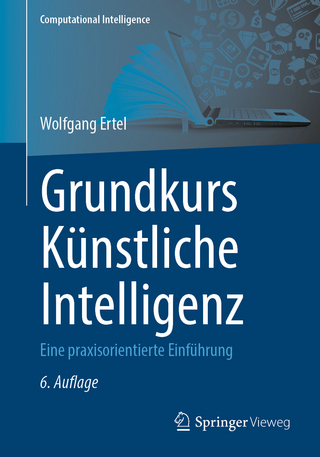
Turing’s Connectionism
Springer London Ltd (Verlag)
9781852334758 (ISBN)
1. Introduction.- 1.1 Turing’s Anticipation of Connectionism.- 1.2 Alan Mathison Turing.- 1.3 Connectionism and Artificial Neural Networks.- 1.4 Historical Context and Related Work.- 1.5 Organization of the Book.- 1.6 Book Web-Site.- 2. Intelligent Machinery.- 2.1 Machines.- 2.2 Turing’s Unorganized Machines.- 2.3 Formalization and Analysis of Unorganized Machines.- 2.4 New Unorganized Machines.- 2.5 Simulation of TBI-type Machines with MATLAB.- 3. Synthesis of Logical Functions and Digital Systems with Turing Networks.- 3.1 Combinational versus Sequential Systems.- 3.2 Synthesis of Logical Functions with A-type Networks.- 3.3 Synthesis of Logical Functions with TB-type Networks.- 3.4 Multiplexer and Demultiplexer.- 3.5 Delay-Unit.- 3.6 Shift-Register.- 3.7 How to Design Complex Systems.- 3.8 Hardware Implementation.- 4. Organizing Unorganized Machines.- 4.1 Evolutionary Algorithms.- 4.2 Evolutionary Artificial Neural Networks.- 4.3 Example: Evolve Networks that Regenerate Bitstreams.- 4.4 Signal Processing in Turing Networks.- 4.5 Pattern Classification.- 4.6 Examples: Pattern Classification with Genetic Algorithms.- 4.7 A Learning Algorithm for Turing Networks.- 5. Network Properties and Characteristics.- 5.1 General Properties.- 5.2 Computational Power.- 5.3 State Machines.- 5.4 Threshold Logic.- 5.5 Dynamical Systems and the State-Space Model.- 5.6 Random Boolean Networks.- 5.7 Attractors.- 5.8 Network Stability and Activity.- 5.9 Chaos, Bifurcation, and Self-Organized Criticality.- 5.10 Topological Evolution and Self-Organization.- 5.11 Hypercomputation: Computing Beyond the Turing Limit with Turing’s Neural Networks?.- 6. Epilogue.- Useful Web-Sites.- List of Figures.- List of Tables.- List of Examples, Theorems, Definitions, Propositions, and Corollaries.
| Erscheint lt. Verlag | 26.9.2001 |
|---|---|
| Reihe/Serie | Discrete Mathematics and Theoretical Computer Science |
| Zusatzinfo | 9 Illustrations, black and white; XXIV, 200 p. 9 illus. |
| Verlagsort | England |
| Sprache | englisch |
| Maße | 155 x 235 mm |
| Themenwelt | Informatik ► Theorie / Studium ► Künstliche Intelligenz / Robotik |
| Informatik ► Weitere Themen ► Hardware | |
| ISBN-13 | 9781852334758 / 9781852334758 |
| Zustand | Neuware |
| Informationen gemäß Produktsicherheitsverordnung (GPSR) | |
| Haben Sie eine Frage zum Produkt? |
aus dem Bereich


